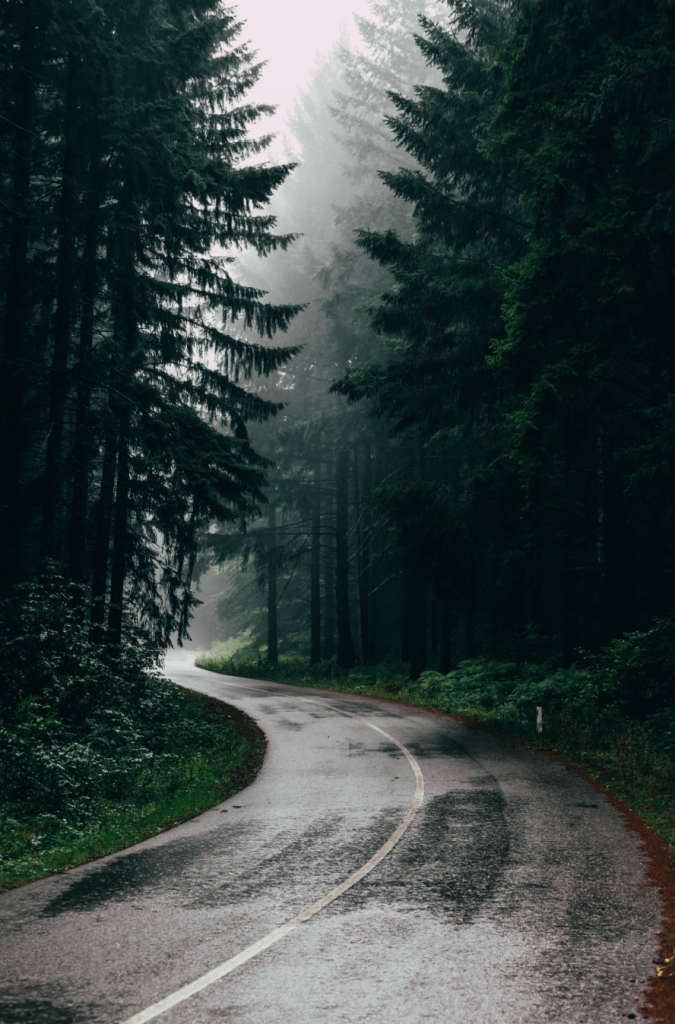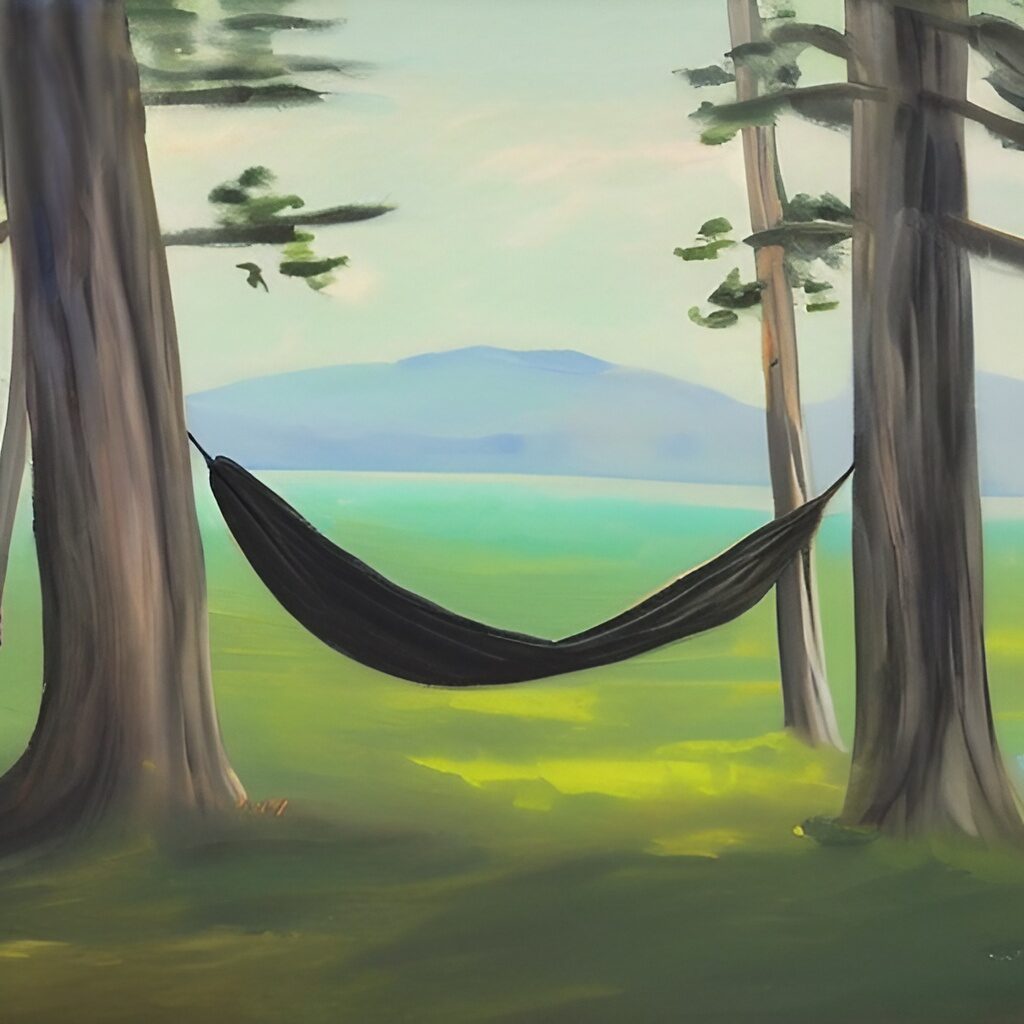
Camping in Tents vs Hammocks–Lately, I’ve come across the debate quite often.
A tent is probably the first thing that comes to mind when you think of camping. It goes together like bread and butter, coffee and cream, campfire and smores, or copy and paste.
However, hammock camping is a growing trend. Are hammocks going to win the battle, or is it just a fad?
Our team of avid and open-minded campers has collected all the important information to help you break the tie. We’ve sifted through dozens of opinions and considered all of the aspects.
So, here’s a head-to-head comparison of what tents and hammocks can and can’t provide to enrich your outdoor experience.
| Feature | Tent camping | Hammock camping |
| Price | Wide range of prices | More affordable option |
| Sleeping comfort | Depends on the type and size of the bed (sleeping bag, cot, air mattress,…) | Exceptional comfort, but for back sleepers, only |
| Setup | Wide range from under 60 seconds to 30-40 minutes | 5 to 15 minutes. Has a learning curve |
| Weather Protection | Depends on the quality. Can be outstanding | Poor. Can be upgraded with additional accessories |
| Critters and animal protection | Excellent bugs and creepy crawlies protection | No protection without additional gear |
| Weight and portability | Weight can vary from 2 lbs. to 60+ lbs. | Weigh 0.5 to 3 lbs. Ultralight, super-compact and portable |
| Versatility | Harder to pick a spot, but can be used in all seasons and landscapes | More options to pick a spot as long as there are trees available. Not the best for winter |
| Warmth | 4-season tents can retain warmth well | Can’t retain warmth without additional equipment |
| Additional accessories | Lanterns, fans, table and chairs, coffee makers, cooking equipment, cloth hangers,… | Not too many: rainfly, bug net, undercloth, possibly lantern |
- Price – Camping in Tents vs Hammocks
- Comfort – Camping in Tents vs Hammocks
- Setup – Camping in Tents vs Hammocks
- Weather Protection – Camping in Tents vs Hammocks
- Protection from Insects and Animals – Camping in Tents vs Hammocks
- Weight and Portability – Camping in Tents vs Hammocks
- Versatility – Camping in Tents vs Hammocks
- Warmth – Camping in Tents vs Hammocks
- Additional Accessories – Camping in Tents vs Hammocks
- Other Perks of Hammock Camping – Camping in Tents vs Hammocks
- Other Perks of Tent Camping – Camping in Tents vs Hammocks
- Conclusion: The Final Verdict – Camping in Tents vs Hammocks
- Frequently Asked Questions – Camping in Tents vs Hammocks
- 1. What Are the Advantages of Camping in a Tent? – FAQs
- 2. What Are the Advantages of Camping in a Hammock? – FAQs
- 3. Is it Possible to Camp in Both a Tent and a Hammock? – FAQs
- 4. Are There Any Drawbacks to Camping in Either a Tent or a Hammock? – FAQs
- 5. How Much Space is Needed for Each Type of Camping Setup? – FAQs
- 6. Is One Type of Camping More Comfortable Than the Other? – FAQs
- 7. What Accessories or Gear Do I Need for Each Type of Setup? – FAQs

Price – Camping in Tents vs Hammocks
Winner: Hammock
Let’s face it, price always matters. No one wants to splash money on an under-par product.
Both tents and hammocks come in a wide range of prices based on quality, size, features, and brand. To cut to the chase, on average, hammocks are more affordable than tents. Let’s break it down.
Tents have so many different styles, shapes, and sizes, so it’s natural that the price range is huge. However, 2-person budget options typically cost around $50 to $150. As your requirements scale up, so do the prices.
Mid-range tents can cost anywhere between $150 and $350. High-end tents’ price range begins at roughly $350, and there’s almost no upper limit. The MSR Habitude 6 Tent is an example of a high-end, high-quality tent. Some large top-notch tents can have whopping 4-digit prices.
We have a comprehensive article on how much you should spend on a tent. Feel free to check it out.
As for hammocks, you can find plenty of options between $20 and $50. Like tents, the prices go up with the quality and premium brands. Still, high-end hammocks cost between $200 and $300.
So, tents are more expensive than hammocks. It’s only natural since hammocks have a simpler design, less fabric, and no poles. Still, they don’t come cheap if you’re looking for top-notch products.
Comfort – Camping in Tents vs Hammocks
Winner: Hammock (but Only for Some)
Speaking of comfort, it comes down to sleep. Yes, tent comfort encompasses much more than just a good night’s rest, you can only sleep or sit in a hammock.
So, what’s more comfortable?
Sleeping in a tent comes with a couple of challenges. The ground can be unforgiving. The surface may be uneven. Sleeping bags are too snug for tossing and turning. An unnoticed rock or a tree root can make you feel miserable, and consider repositioning your tent.
On the bright side, there’s a wide variety of options to overcome the challenges. From sleeping cots to air mattresses of different sizes and thicknesses.
So, at the end of the day, sleep quality doesn’t depend on the tent. It mostly depends on your sleeping gear. The tent plays a part only in colder or rainy weather.
But, the real question here is how comfortable are hammocks? A hammock between 2 palm trees on a tropical island sounds super comfy. But what about sleeping in a hammock night after night?
There are 2 roads from here and no definite answer. For example, dedicated side or stomach sleepers won’t appreciate the experience. Hammocks have a U-shape that allows you to sleep on your back only.
Bridge hammocks have bars at the ends, creating a channel from one end to another. This allows more freedom and side sleeping. But bridge hammocks are heavier, more expensive, and more difficult to set up.
Truth be told, many side or stomach sleepers get used to sleeping on their back in hammocks. One user who describes his usual sleeping style as “tossing all night long” sleeps on his back in a hammock and doesn’t move at all.
Thanks to hammocks, I have read many similar experiences of restless sleepers who sleep tight without turning and tossing.
On the upside, many people believe that sleeping on your back in the hammock provides ultimate comfort. After all, it’s the sleeping position most doctors recommend as the best for your health.
To avoid a “banana” shape, slightly tilt your upper body to one side and lower body to the other. This diagonal position reduces the curve of the hammock to allow you to sleep like a baby.
And don’t worry about flipping over. Modern hammocks are designed to prevent it.
So, if you’re a back sleeper, you won’t be just elevated off the ground, but you’ll get an elevated sleeping experience.
Hammocks help your sleep in several ways. Obviously, fresh air is helpful. Also, there are no pressure points, which are the greatest enemy of good sleep. Finally, a perfect position allows your neck and back muscles to relax while breathing properly.
A gentle swaying motion helps to fall asleep faster and deeper. This is backed up by scientific research.
A final decision? Sleeping in a hammock is more comfortable, but not for everyone. A baby sleep-hammock analogy fits here pretty well. Just like babies, some people sleep peacefully and wake up invigorated. Others would rather wake up and cry.
Tents offer a range of other comfort perks, but I didn’t consider them as it would be comparing apples and oranges.
Setup – Camping in Tents vs Hammocks
Winner: Tent
This may come as a surprise, but tents are slightly easier to set up than hammocks. I know hammock lovers will jump to prove otherwise, but here are the facts.
Pitching a tent can take 10-20 seconds to 30-40 minutes. Back in the day, tents were notoriously difficult to erect properly. Mastering it used to be a source of pride.
But modern tents are designed to be foolproof and easy to pitch. Instant tents, color-coded poles and sleeves, and precise instructions allow quick and easy setup. For example, the Coleman 4-Person Pop-Up Tent can be erected in 10 to 20 seconds.
Moreover, it’s the same every single time. So, once you get the hang of it, it becomes a routine.
While hammocks aren’t that difficult to set up, there’s a learning curve. First, it’s not easy to get the perfect hang angle. You also need to consider the distance and the size of the trees. Finally, if you’re using an underquilt or tarp, it must be set independently.
Even though you’re using the same hammock, the setup process is slightly different every time. Because of the distance between the trees, possible terrain inclination, etc.
So, getting a consistent hang requires time and practice. Becoming fully proficient at it may take longer than a camping season. However, it should take between 5 and 15 minutes once you grasp it. Which is quick enough if you ask me.
The final verdict – I give a slight advantage to tents. Some tents are super quick and easy to pitch, and others take some time. While all hammocks can be set pretty quickly, the learning curve shifts the balance.
Weather Protection – Camping in Tents vs Hammocks

Winner: Tent
Okay, it’s obvious that tents offer better protection from the elements. But it’s not that simple. Tents vary wildly when it comes to weather protection. And there are ways to improve your hammock to be less exposed.
Tents come with a variety of weapons to battle the elements. They have rainflies, waterproof fabric, sealed seams, and inclined walls and roofs to prevent water from entering the tent. Or building up on the roof.
4-season tents commonly can weather all kinds of storms. It’s easy to come across dozens of stories of campers who slept tight and stayed dry through torrential storms.
Tents designed for warmer weather come with many mesh panels and large openings to allow airflow. Also, some tents have blackout fabric to keep the tent dark and fresher.
While some of them can’t handle a lot of rain or wind, all offer some level of protection. After all, a tent is a fully enclosed shelter.
Check out our article on the Best Tents For Bad Weather.
While hammocks may appear to be made only for perfect weather, it is not. There are a couple of accessories that can provide protection.
A waterproof tarp is one option. Many modern hammocks come with it. It is usually a bit larger than the hammock. The bottom line is that it will protect you from the rain as if you’re in a tent.
Well, you’ll be lying down, but the point of the tarp is to be able to sleep and stay dry if it rains.
When it comes to wind, there’s not much you can do. Hammocks are exposed, and the wind can make you uncomfortable. You can improve your position if you use an underquilt. It is an insulating layer that attaches underneath the hammock.
You don’t have to worry about the weather on hotter days and nights. This is where hammocks shine. No airflow issues as you’re completely in the open air. Your trees might provide generous shade if you want to nap during the day.
So, there are options to enhance weather protection in hammocks. But there’s a trade-off as well. Additional accessories add weight and volume, so you won’t be super-light like a simple hammock.
To sum it up, tents provide better weather protection. Hammocks basically don’t protect you from the elements unless you sacrifice their lightweightness and portability.
Protection from Insects and Animals – Camping in Tents vs Hammocks

Winner: Tent
While campers commonly love wildlife, creepy crawlies, bugs, and animals are unwelcome in our shelters. Tents excel in this department and win this lap.
Keeping the bugs away used to be difficult to achieve with old-fashioned tents. These days, you can fully enjoy your outdoor experience without being bugged (pun intended) by bothersome critters and insects. Not to mention the snakes.
Modern tents have mesh panels to provide views while keeping insects away. The panels cover the doors, windows, and often the roof.
While you still have to get in or out of the tent and open the door briefly, chances are your tent can stay bug-free.
When it comes to animals, the tent fabric won’t stop any stronger and more determined animal. Still, if you don’t keep your food in the open, you’ll unlikely have visitors. Tent structures can be large and intimidating for most animals.
After all, most animals don’t like to deal with humans and avoid us. Especially if they are in groups like at designated camping sites.
Hammocks, on the other hand, are pretty exposed. Basically, it’s a bed hanging on 2 trees. The elevated position means the ground creepy crawlies won’t bother you. But mosquitos or tree-dwelling critters will have an open invitation.
This is easy to solve with mosquito nets, though. They are not heavy and won’t add much extra weight or bulk. It will slightly reduce the airflow and compromise the beauty of an open view. However, if the area is infested with insects and critters, you’ll be much happier with the net.
Many users from Florida and other “buggy” states shared stories about sleeping peacefully only to wake up with dozens of mosquito bites. Yeah, these pests can bite through the thin fabric. So, an underneath tarp is also needed for full protection from bugs.
As for the animals, I don’t think the hammock can help. Some call hammocks “bear burritos” or “bear soft tacos”. I love the nickname, but hammocks won’t attract larger animals.
At the end of the day, neither tent nor a hammock will protect you should the bear decide to visit you. But, an outstanding bug, critter protection, and shelter-like structure make the tent a clear winner.
Weight and Portability – Camping in Tents vs Hammocks
Winner: Hammock
Looks can be deceiving, but not in this case. Hammocks are lighter and more portable than tents.
Tents can weigh anywhere from 2-3 pounds backpacking tents (like the Big Agnes Copper Spur HV UL1 Tent) to large multi-room 50-60 pounds family tents (Tahoe Gear Ozark 16 Person Cabin Tent).
Hammocks can be as light as 5 oz. (the Hummingbird Single Hammock) or somewhat heavier, around 3 pounds ( the Hennessy Explorer Deluxe Asym Zip Hammock).
So is there any real competition here? Maybe not, but a couple of things can shift the balance.
Tents can be heavy, but backpacking tents can challenge some hammocks. Modern, ultralight backpacking tents should weigh less than 4 pounds. That’s pretty light and impressive.
With backpacking in mind, carry cases are compact enough to fit into the backpack. Actually, weight and portability are among the most important features of backpacking tents.
However, family and car camping tents are typically larger, bulkier, and heavier. So, tents can be lightweight and portable, but you may almost need a forklift to move the heaviest ones.
On the other hand, hammocks excel in this department. This is actually a major advantage of hammocks. With ultralight equipment, you can cover great distances and feel free as a bird.
Hammocks are also super packable and portable. When packed, hammocks are barely larger than your smartphone. They are thicker, so you probably can’t fit them into your pocket, but they will take up almost no space in your backpack.
But, if you want to upgrade the comfort, warmth, and weather protection, your hammock will no longer be as light. Adding a bug net, rainfly, underquilt, or hammock stand can increase the weight.
A bug net won’t make a big difference, while a stand will make it heavier than some tents.
The final verdict – hammocks easily win. While backpacking tents are very lightweight and portable, hammocks are lighter and more compact.
Versatility – Camping in Tents vs Hammocks
Winner: Tent
As expected, tents offer more choices and camping opportunities than hammocks. It is only natural as larger tents are designed to fulfill more purposes.
But it’s not a one-way road. Both tents and hammocks have some advantages and limitations regarding placement options. Hammocks have some aces up their sleeve as well.
Hammocks offer more options when choosing a perfect spot in forested areas. Whether it’s a wet grassland or a rocky hilltop with a lovely view, you can set up your hammock as long as trees are available.
The ability to be on the go and cover distances also provides more options to enjoy your adventures.
There are also fewer legal limitations regarding where you can set up the hammock.
Hammocks obviously win this leg in forested areas. However, strength can also become a liability. It can be challenging or impossible to find a place for your hammock in deserts, grasslands, or any other landscape with little or no trees.
Yes, you can use hammock stands that make trees completely unnecessary. But, using the stand nullifies one of the major features of hammocks – being lightweight and super-portable. Hammock stands add extra weight and can be cumbersome to pack and carry.
On the downside, hammock versatility is limited by poor weather protection. Yes, it’s possible to sleep in the hammock, even in the winter. But you’ll need a winter sleeping bag, underquilt, and high-quality rainfly to stay warm and dry. It’s not a very cozy experience.
And, of course, you can’t use your hammock if there are no trees in the area.
If you use a tent, it might be challenging to pick the right spot. It needs to be flat. You should consider sun and wind exposure. Cleaning the spot is often necessary to remove sticks, small rocks, or anything that can damage your tent.
You need to avoid hills, wetlands, or rocky ground.
You’ll probably want to leave space between yourself and other tents on the site. You can make friends on camping trips, but it’s not very pleasant if you can hear every word spoken in the neighboring tent. Or vice versa.
I could go on more, but you get the picture. To place a hammock, you only need 2 trees. No worries about slopes, uneven ground, rocks, and stones.
Tents also have different designs that allow them to excel in various conditions and locations. From deserts to high, snow-covered mountains. From tropical forests to plains and treeless drylands.
3-season tents can provide great protection against the elements and a home-like experience inside the tent. 4-season tents will make winter camping trips comfortable and enjoyable.
In summary, while hammocks have some advantages regarding picking the spot and changing the location, tents can perform throughout the year and in all landscapes.
Warmth – Camping in Tents vs Hammocks

Winner: Tent
All said and analyzed, you already know this answer. Hammocks can’t compare to tents when it comes to warmth.
Let me be clear: most tents are not insulated and will struggle to keep you warm in the cold weather. But, the tent is a shelter with walls that acts as a windbreak, so it will always be warmer than the outside.
High-quality, 4-season tents can maintain a decent level of warmth inside the tent, even in freezing cold weather. But even a modest, budget tent will protect you from cold to a certain extent.
With a warm sleeping bag and warm clothes for the day, you will be just fine inside your tent.
Hammocks can’t keep you warm. It’s as simple as that. Basically, you’re sleeping in the open air, and the wind and airflow will cool you down very quickly.
Yes, you can use an underquilt and a top cover to get some insulation, but it will work throughout 3 seasons at most. And your gear will be heavy and bulky, so you won’t be able to walk far as easily.
Some hammock lovers sleep in their hammocks, even in winter. But the extra gear will keep you warm, not the hammock. People who climb Mt Everest or other high and cold mountains don’t sleep in hammocks for a good reason – it’s not what the hammocks are meant for.
So, tents are better at keeping warmth than hammocks.
Additional Accessories – Camping in Tents vs Hammocks
Winner: Tent
There’s always room for improvement, which doesn’t always mean switching to a higher-class product. Put simply: tents have more options for accessories.
To get the best out of your tent, you can use lanterns to get a nightlight. Ground tarps can increase the lifetime of your tent.
Guylines and pegs can make the tent more sturdy in strong winds. Not to mention cooking equipment, coffee makers, fans, and AC units. Okay, you need power access at your campsite for some of these.
Still, as long as you can get them into the tent, you can safely store all kinds of equipment and have a livable and comfortable place to stay.
You can also cook or prepare some tea or coffee on your hammock camping trips. But, these gadgets must stay outside and be exposed to the elements.
So, it comes down to a mosquito net, rainfly, and underquilt.
Thus, it’s obvious that tents offer much more ways to upgrade your shelter.
Other Perks of Hammock Camping – Camping in Tents vs Hammocks
We’ve covered most of the features of tents and hammocks. However, they come with a couple of extra advantages.
- Visibility – While some tents can offer almost panoramic views, they can’t match hammocks. Simply, you’re out in the open and can enjoy or observe the surroundings without any unnatural obstacles.
- Airflow – No need to explain. The hammock is as airy as it gets.
- True outdoor experience – Apart from sleeping, this is probably the greatest thing about hammocks. There’s nothing between you and the great outdoors.
Other Perks of Tent Camping – Camping in Tents vs Hammocks
- Capacity – It’s great when you can share your experience with people. Large tents can accommodate your whole family and then some.
- Convenience – While hammocks provide a true outdoor experience, tents allow you to include amenities that you’re not ready to give up. They call it a home-away-from-home experience.
- Storing space – From sheer space and additional vestibules to pockets and loops, tents can provide plenty of options to store your gear.
Conclusion: The Final Verdict – Camping in Tents vs Hammocks

So, what’s the final score? Tents have won more categories, but it’s only natural. It is a larger structure designed to provide comfort in many ways. Hammocks have some unique features that make them more appealing to many campers.
At the end of the day, I will not call the winner. The outcome depends on your preferences and camping ambitions.
Tents come in many designs to suit anyone from mountaineers to backcountry campers to those who want home-like comfort outdoors.
Hammocks offer the ultimate outdoor experience and unimaginable sleeping comfort (for some people, not all).
The question is not which style is better. It is which style will enhance your experience more. Now you know all the facts. So, give it a try.
Frequently Asked Questions – Camping in Tents vs Hammocks
1. What Are the Advantages of Camping in a Tent? – FAQs
Tents provide shelter from wind and rain and typically come with stakes and poles for extra stability. Tents also offer more privacy than a hammock, as you can zip up the doors for added security. Tents can also store gear more easily since there are interior compartments available.
2. What Are the Advantages of Camping in a Hammock? – FAQs
Hammocks offer superior comfort compared to sleeping on the ground as they suspend the body off the ground, removing any pressure points that can cause discomfort when sleeping on hard surfaces. They’re lightweight and quick to set up and tear down, making them perfect for people who want to move around quickly with their campsite.
3. Is it Possible to Camp in Both a Tent and a Hammock? – FAQs
Yes, you can use both a tent and a hammock at once, depending on your campsite needs – it’s common practice among campers to sleep in their hammocks while using their tent as storage or cooking space. Just make sure that there is enough distance between your tent and your hammock so that one doesn’t get too much shade or wind during setup time.
4. Are There Any Drawbacks to Camping in Either a Tent or a Hammock? – FAQs
Yes, both tents and hammocks have some drawbacks – tents are heavier than most hammocks, making them more difficult (but not impossible) to transport; plus, tents require more setup time than most types of hammocks (with an exception being double-layer designs). On the other hand, many people find that sleeping in a hammock is slightly less comfortable than lying flat on the ground due to its curved shape; bad weather conditions, such as rain and high winds, can limit how well you stay suspended in your hammock.
5. How Much Space is Needed for Each Type of Camping Setup? – FAQs
The amount of space required depends largely on the size of your tent or your chosen type of hammock – freestanding tents need at least 1 person length away from trees or plants, while regular camping hammocks require 2 points spaced apart anywhere from 10ft – 20ft depending on height weight/body size; however specialty models such may require additional anchoring points due to their unique shapes/structures (e.g., double layers).
6. Is One Type of Camping More Comfortable Than the Other? – FAQs
It really depends – some campers find that lying flat on the ground inside a tent offers greater comfort when compared with sleeping suspended off the ground in their backpacking style or specialty model hammer, while others may prefer cocooning inside their insulated double layer design despite its lower capacity weight limits (normally 400lbs only).
7. What Accessories or Gear Do I Need for Each Type of Setup? – FAQs
For tents, you’ll need poles, stakes/ground screws, plus appropriate rope connections/straps if setting up indoors org outdoors; meanwhile, basic single models will usually require carabiners/webbing straps whilst specialized versions such as double layers may need additional components including spreader bars etc… As for hammocks, you’ll likely need two anchors for suspension, which could be anything from tree trunks/branches if outdoors or specific hardware items like roof joists if indoors – please consult guidebooks/instructions depending on the model purchased before attempting to set it up yourself!














